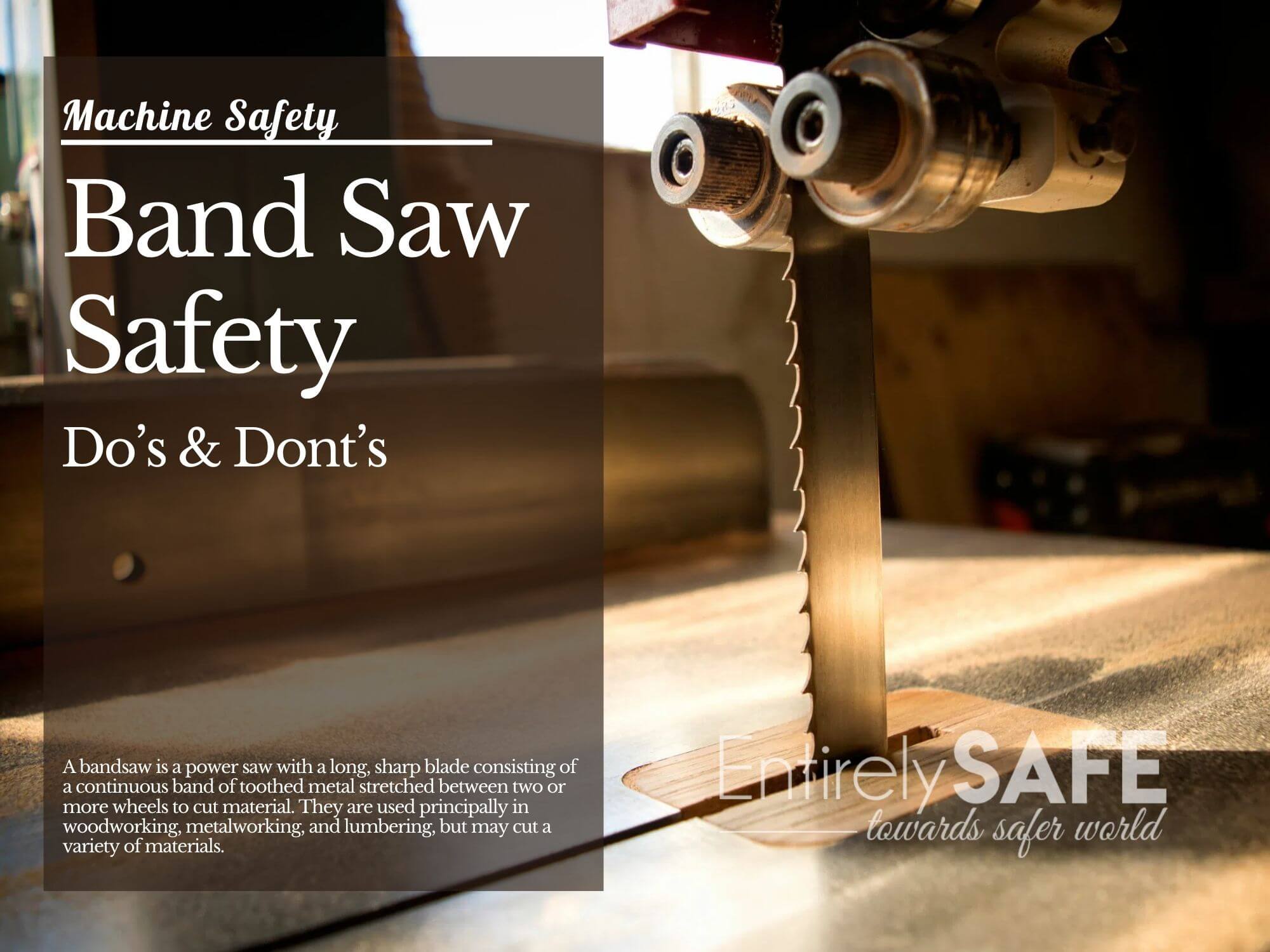Band Saw Safety

A bandsaw is a power saw with a long, sharp blade consisting of a continuous band of toothed metal stretched between two or more wheels to cut material. They are used principally in woodworking, metalworking, and lumbering, but may cut a variety of materials.
Installation
-
Read the owner’s manual carefully.
- Make sure you understand the instructions before attempting to use any tool or machine.
- Learn the applications and limitations before use.
- Securely anchor the band saw to the floor (or a workbench of appropriate height) to reduce vibration
- Adjust blade guard height to about 3 mm or 1/8 inch to 6mm or 1/4 inch above the top of the material being cut. Wider gaps will place tension on the blade and increase the risk of breaking.
- Use band saw blades that are sharp, properly set and otherwise suitable for the job (e.g., the right tooth pitch; tooth form; blade width).
- Provide adequate lighting at the machine table. A light fixture with a flexible connection can provide essential lighting.
Pre-Job Inspection
- Make sure the wheels and blade are in good condition.
- Make sure the blade is positioned properly on the track.
- Ensure the blade is tracking correctly and runs freely in and against the upper and lower guide rollers.
- Ensure the blade is under proper tension. A band saw equipped with automatic tension control is desirable.
Safety Guards
- Make sure all guards are in place and properly adjusted.
- Make sure all band wheels are enclosed.
PPE
- Wear safety glasses or goggles, or a face shield (with safety glasses or goggles).
- Wear hearing protection that is suitable for the level and frequency of the noise you are exposed to in the woodworking area.
- Wear protective footwear when required.
- Tie back your hair, remove jewellery, and wear fitted clothes to avoid getting caught or pulled by the moving blade.
Operating Band Saw
- Keep hands away from the line of the cut, and braced against the table.
- Hold stock firmly and flat on the table to prevent the stock from turning and drawing your fingers against the blade.
- Use a push stick when you remove cut pieces from between the fence and saw blade or when your hands are close to the blade. Keep your hands on either side of the blade – not in line with the cutting line and the blade.
- Make release (relief) cuts before tight curves when doing intricate scroll-type work.
- If you need to stop cutting, hold the material firmly and shut down the saw. Wait for the blade to stop moving before removing the piece.
- Keep the floor around a band saw clean and free of obstructions or clutter.
Maintenance
- If maintaining or making repairs, use lockout procedures where necessary.
- Keep the machine properly oiled and serviced.
Don’ts
- Do not use excessive force when pushing the wood past the blade.
- Do not back the stock away from the blade while the saw is in motion if the workpiece binds or pinches on the blade.
- Do not stop a band saw by thrusting stock against the cutting edge or the side of a blade immediately after the power has been shut off.
- Do not remove sawdust or cuttings from the table by hand or with compressed air. Use a stick or brush.
- Do not leave a saw running unattended. Turn off the power and make sure the machine has stopped running before leaving the area.

